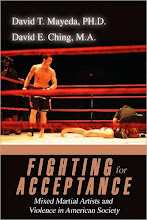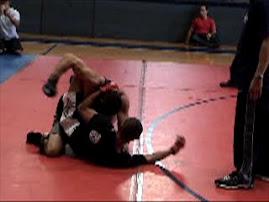 The world has been moderately focused on the hundreds of thousands of internally displaced persons (IDP) who have fled to under-prepared refugee camps, leaving their homes in Pakistan and Sri Lanka to escape the crossfire from wars between their governments and resistance forces. Similar phenomena are occurring in other areas of the world, including the southern area of the Philippines, in regions of Mindanao.
The world has been moderately focused on the hundreds of thousands of internally displaced persons (IDP) who have fled to under-prepared refugee camps, leaving their homes in Pakistan and Sri Lanka to escape the crossfire from wars between their governments and resistance forces. Similar phenomena are occurring in other areas of the world, including the southern area of the Philippines, in regions of Mindanao.As reported by IRIN (5/25/09):
It is almost 10 months since all-out war re-erupted between government forces and the separatist Moro Islamic Liberation Front (MILF).
In recent months, about 8,000 internally displaced persons (IDPs) have flocked to Libungan Toretta, an impoverished yet picturesque village of a few hundred, mostly subsistence farmers, near Mindanao's Pigkawayan town. Many would rather suffer the indignity of living in squalid camps than getting caught in potentially deadly crossfire.
Not surprisingly, as the number of IDPs grows in and around “safe heavens,” competition for food and water in those heavens grows accordingly, as does the risk of disease due to rapid over population and inadequate waste disposal infrastructure. The approximately 8,000 recent Filipino IDPs, however, are a tiny fraction of the collective number of IDPs who have left their homes to evade internal conflicts over the years. More from the IRIN report:
According to the National Disaster Coordinating Council (NDCC), some 48,166 families or 240,650 people remain displaced by violence as of 18 May.
Of that number, 112,531 people are in some 127 evacuation centres scattered over Mindanao. Another 128,119 are staying with friends or relatives.
As with other contemporary civil wars that at face value only reflect internal state conflict, there are broader structural issues that stem from global inequality, a lack of regulation over weapons trafficking, and colonialism.
Colonialism
Beginning in the 16th century, Spanish colonialism in the Philippines was mediated heavily through trade, but even more so through the Catholic church. Islam, however, was less affected by the Spaniards in the southern region of Mindanao – also one of many areas where the eventual national language of Tagalog was not spoken.
In the 19th century, the Spanish and British made Manila the Philippines’s primary international port. As international trade grew, the Philippines’s agricultural economy shifted to a commercialized state, requiring peasant labor from other Philippine regions. Descendants of the early Spanish colonizers were thereby empowered financially and shortly thereafter, educationally.
By this time, the intellgentsia class was not just Anglo-Saxon. They were the descendants of the Spanish who had had children with the indigenous peoples. Seeking political power, this privileged class established a broader national identity of “Filipinos,” but which was less inclusive of the southern regions, notably where today’s Moro Islamic Liberation Front (MILF) is planted.
Thus, there were distinct geographic, political, and cultural (e.g., language, religion) differences between the northern and southern Philippine regions that could have led to a split into two separate states.
However, American colonization in 1898 changed the Philippines’s political dynamics dramatically. The southern Muslim regions were cemented as part of the Philippines nation, though they remained marginalized in the ways noted above. Furthermore, the Philippines solidified an American model of government and language (English) that benefited those living in the northern region, especially in and around the country’s capital of Manila.
Thus, even after the Japanese occupation during World War II and once independence from the U.S. was declared in 1946, the colonial structures remained. Filipinos from Mindanao were further excluded from the standardized power structures, and therein lays the colonial history of the resistance now being asserted by the MILF and similar resistance groups in the region.

This is not to overly romanticize MILF or organizations such the Abu Sayyaf Group. There is little doubt that they are involved in kidnappings, extortion, homicides, and other forms of organized crime that plague innocent communities.
As described, through their battles with the government, they play a significant role in creating hundreds of thousands of IDPs. This notwithstanding, to ignore the colonial traces of these organizations’ development would likewise be remiss.
Turning to a more contemporary structural problem, what makes resistance groups and national governments so dangerous is not necessarily their ideology, but the extremely easy access they have to acquiring weaponry.
Guns
Small arms are another factor that has an immense influence on IDPs world wide. To begin with, governments do little if anything to stop the spread of small arms (e.g., hand guns, AK47 assault rifles). According to a 2006 report by IRIN (Guns Out of Control: The Continuing Threat of Small Arms), the United States exported $741 million worth of small arms in 2001. And while U.S. manufacturers may not sell these arms to unlicensed buyers nationally and internationally, the re-sale of these U.S. made weapons frequently lacks oversight.
In short, there are meager global criterions that could help enforce regulation and prevent small arms sales to organizations in countries/regions that are embedded in heavy conflict. This makes prevention of weapons trafficking through the black market virtually impossible.
Moreover, the spread of small arms continues in large part because guns are durable over long time periods – up to twenty years. Thus, as countries like the United States, China, Iran, Brazil, and Switzerland keep producing small arms and have the ability sell those arms globally without serious impediment, the deleterious effects will last literally for decades.

The role small arms play in creating IDPs is obvious. Guns don’t only kill and injure victims; they maximize intimidation. Again, non-violent civilians like those in Mindanao feel compelled to leave their homes out of fear from being caught in crossfire. Additionally, small arms are the primary instruments used by state and rebel forces to bully people out of their communities and/or commit other crimes, including rape. The rippling effects of mass displacement can be extremely severe. From the IRIN report:
A gun may not ostensibly be culpable for the death of a malnourished child. This child, however, may have been forced to leave his home at gunpoint in a time of war, to flee from productive land and a nearby clinic to a locale so militarized that even the most hardened aid agencies have given up attempting to supply food and medical aid. The ultimate cause of death may be starvation, but the chaos and destruction perpetrated at the barrel of a gun lay the foundation of this tragic end, illustrating the indirect, destructive impact of guns in unregulated settings (p. 6).
The above paragraph applies directly to ongoing crises in and around regions of the Philippines, Somalia, Pakistan, Sri Lanka, Sudan, DRC, Kenya, etc. Historically, western colonialism played a significant role in shaping the stratified national structure of the Philippines, which still manifests in today’s internal conflict.
Adding to the problem, contemporary loose international policies allow for weapons trading that make these international conflicts all the more deadly. And as the conflicts intensify, the weapons manufacturing companies intensify their wealth.
For more on the corruption and shifting alliances that affect the small arms market, listen to these great podcasts:
* BBC World Service Report: The Afghan Arms Bazaar (Thursday 18 September 2008; you have to scroll down to find it)
* NPR: Where Does Mexico Get Its Guns? (17 April 2009)
(Photos courtesy of IRIN)











"Philippines: IDPs sell rice rations to survive" (IRIN 6.7.09)
ReplyDeletehttp://www.irinnews.org/aspx?ReportId=84727
nice blog!!
ReplyDeletevery nice.
ReplyDeletethe worst part of this, is when you noticed that the most of this people are children, to put worst this situation, many of the people who stay in they countries, end in the hands of the army, or well in Guerrilla warfare.
ReplyDelete